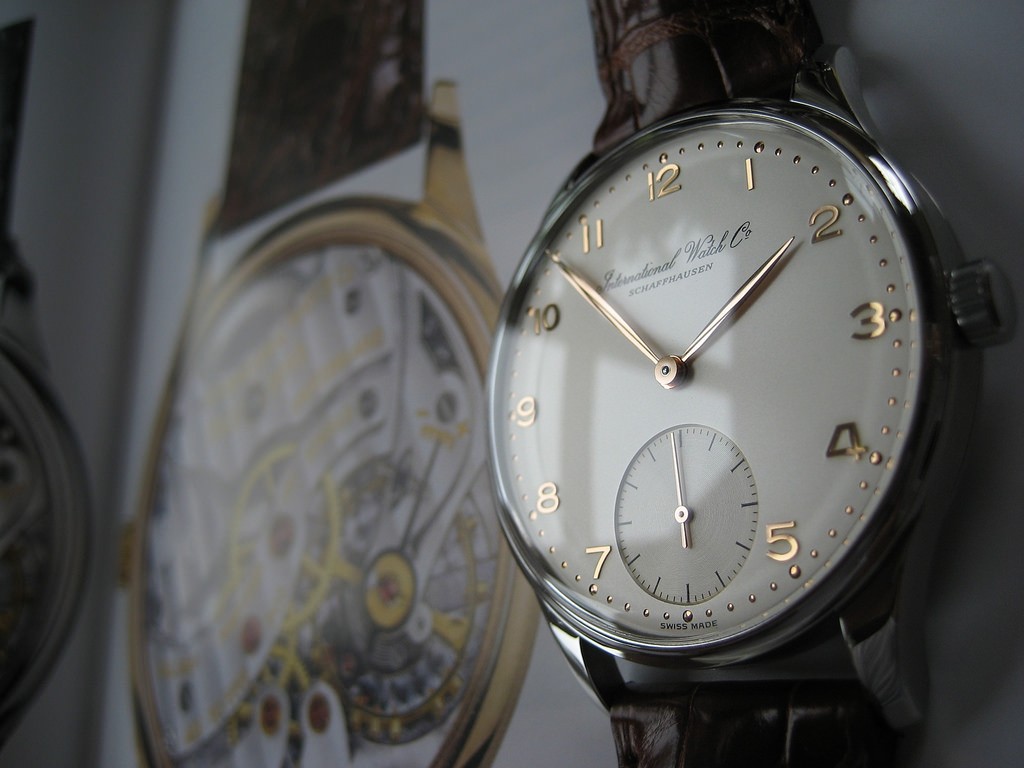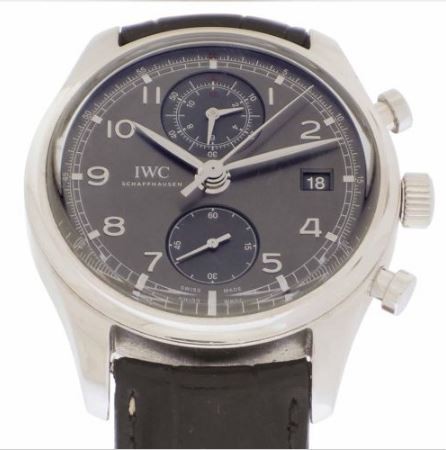The Evolution of the IWC Portuguese
Sometimes you have to wonder how big watches are going to get. While you may think that the 42mm hunk on your wrist is a late development, it actually started in 1939 when IWC’s Portugieser broke the size barrier on wristwatches.
What was the impetus for its scale? In 1930, two Portuguese businessmen travelled to the Schaffausen HQ in northeast Switzerland, where F.A. Jones had established IWC in 1869, and met with E.J. Homburger, a member of the Rauschenbach family, who ran the company for 4 generations.
Their request was for a large watch with the precision of a marine chronometer. Most wristwatches in 1939 were a modest 33 mm or below, but the movements required for the Portugieser called for a diameter case of 43 mm. The design of the dial was simple and straightforward, with clean Arabic numerals, a thin bezel to increase the visibility of the dial, slender leaf hands and a second-hand subdial at six. The 325 with the 98 Calibre movement featured the “railway track” second markings that border the dial.
Limited production on early Portuguisers
The only movement that could answer the requested precision was a pocket watch, specifically a hunter-style, or savonette, with the crown at three. The 74-Calibre bar movement was chosen as the foundation of the first models, of which only 304 were made. The movement was later upgraded to Calibre 98 in the 40s and 50s. In the 1970s, the modified Calibre 982 provided shock protection, but production was never huge, with only 371 of the 98s and 982s produced.
The Portuguiser returns in the 1990s
That might have been all anyone could say of the Portuguese. But in the early 1990s, an IWC master watchmaker noticed an original Portuguese ref 325 on the wrist of a visiting customer. He was inspired to revive the line and in 1993, in time for the 125th anniversary of the Schaffhausen headquarters, a new Portuguese known as the “Jubilee” ref 5441, was introduced.
The Portuguese continued to be a ‘special edition’ model. 1750 of the Jubilee were made: 250 in platinum, 500 in rose gold, and 1000 in stainless steel. A transparent sapphire caseback showed off the Calibre 9828 movement, while the dial revived the simple elegance of the original.


Only 550 of the Portuguese Minute Repeaters, ref 5240, were made in 1995. The Chronograph Rattrapante ref 3712 came next, then the Automatic Chronograph ref 3714, a slightly smaller brother, only 40.9mm in diameter, which became IWC’s most successful watch.
Portuguese movements move in-house in the 2000s
In 2000, IWC introduced the Portuguese Automatic with an in-house Calibre 5000 movement. It featured a 7-day power reserve indicator on the dial. Again, production was limited to 2000 pieces in platinum, pink gold, and stainless. The Perpetual Calendar followed in 2003, ref 5021.
A Vintage Collection in 2008 featured a hand-wound model with the classic railway track ring. Not quite as paired-down as the 1939, original, it nevertheless pays homage to the design.
The complications Portuguese
Grande Complications are the hallmark of a great watch house and IWC could hardly stand by, so in 2010 they introduced a Portuguese with a perpetual calendar, moon phase, chronograph and minute repeater. A sextant on the caseback pays homage to the marine navigation precision that first inspired the line.
The IWC Portugieser 390404
In many ways, this watch represents the best of IWC innovation. The design and manufacture are completely in-house, in Schaffhausen, including the 89361 calibre movement with 40 jewels and a whopping 68 hour power reserve. It features an upgrade of the genius Pellaton self-winding system first created by IWC master Albert Pellaton in 1943. The unique chronograph display is especially useful for measuring longer increments of time because it automatically converts the minutes into hours and minutes on a separate two-handed dial at twelve o’clock.
The ardoise dial features the iconic railway track around the fixed chapter ring, Arabic numerals, luminous markers, the date window at three, and the elongated leaf hour and minute hands. The transparent sapphire crystal caseback shows off the movement. The black leather Santoni strap features the Zifferblatt clasp engraved with “Probus scafusia,” which translates to “Crafted in Schauffhausen.”
The future of IWC
After a few ‘lost’ decades, IWC seems to have reclaimed their hereditary craftsmanship. With a clean and functional look, the Portuguese has amassed a loyal following. IWC is continuing to innovate. The line turned 75 in 2015 and IWC marked the occasion with twelve new models. Among them was the Automatic ref 5007 with ceramic components. The invention and interest IWC is putting into the Portuguese bodes well for its next century.




